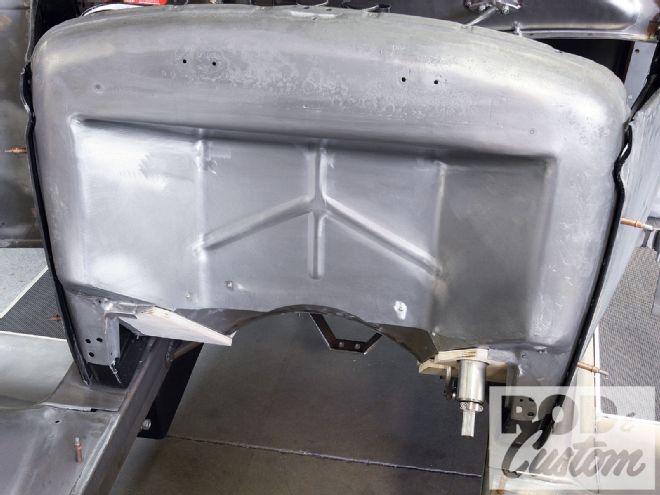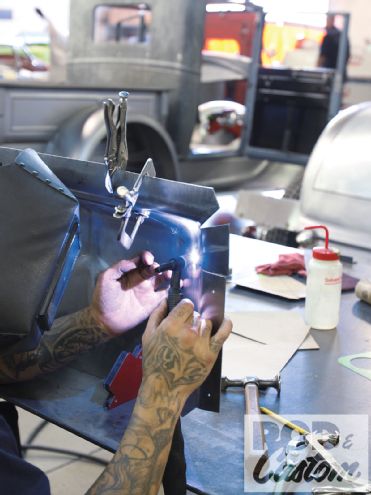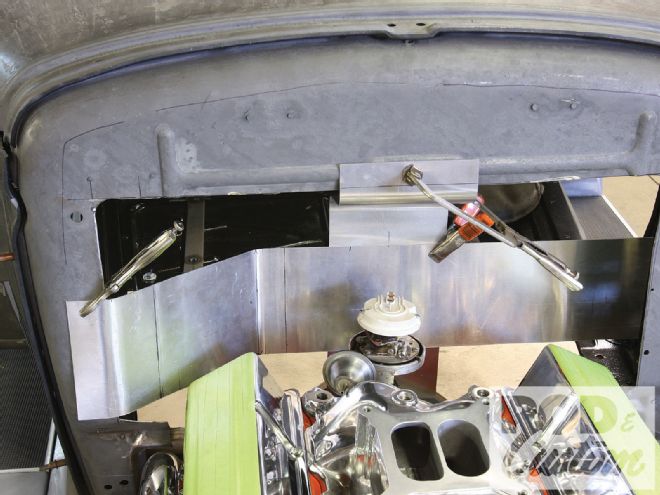
If you want to fit a small-block Chevy-or most any OHV V-8-in a Model A, and retain the stock frame and wheelbase, something's going to have to give; there simply isn't enough room between the radiator and the firewall where a four-cylinder motor once lived to fit a V-8, despite the fact that an eight is only four-cylinders long.

The solution has always been to recess the firewall. There are a number of ways this can be done, from using a section of a wheelbarrow, to purchasing ready-made recessed firewall sheetmetal. On a '30-31 Model A we've even seen the firewall removed and re-installed backward.
One of the current projects underway at SO-CAL Speed Shop is a '31 Model A pickup, with a small-block Chevy and stock chassis. These early pickups are not exactly roomy on the inside, and any reduction in interior space will always be undesirable, so the decision was made to make the recess as small as possible, retaining maximum legroom and allowing space behind the dash for an air conditioning evaporator.
 With the body on the chassis, the motor mounted, and the headers, valve covers, and distributor in place, Richie Nogueira cut a section from the firewall. While not as large a "hole" as would be required, it's better to sneak up on the final size then remove too much too soon. A couple of lengths of 6-inch-wide aluminum were then bent up as templates to get an idea of the recess required. These templates were also useful for determining that the valve covers could be removed with the angled sections of the recess in this position.
With the body on the chassis, the motor mounted, and the headers, valve covers, and distributor in place, Richie Nogueira cut a section from the firewall. While not as large a "hole" as would be required, it's better to sneak up on the final size then remove too much too soon. A couple of lengths of 6-inch-wide aluminum were then bent up as templates to get an idea of the recess required. These templates were also useful for determining that the valve covers could be removed with the angled sections of the recess in this position.
We followed along as SO-CAL Speed Shop's Richie Nogueira fabricated a recess for the firewall from 16-gauge steel, making it appear as "stock" as possible. If you're planning a similar sheetmetal adventure yourself, make sure you have the valve covers and distributor you intend on using, as not only will you need them for clearance, but you'll also want to be sure you're able to remove them once the job's finished!